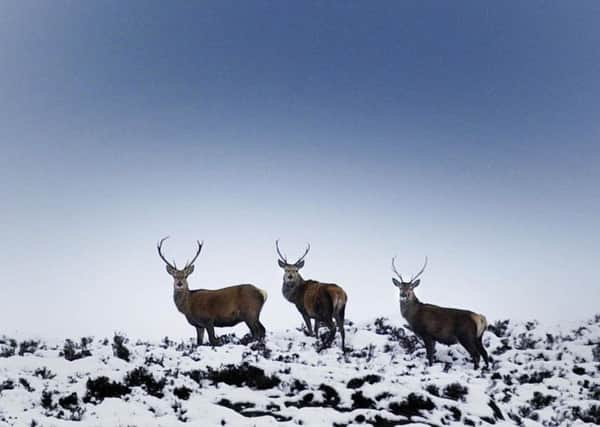Red deer ‘at crisis point after culling slaughter’


Stalkers in the Highlands are blaming conservation groups for “slaughtering” the beasts at a time they do not have the strength to run away.
It is claimed stag numbers on one Knoydart estate have dropped from 1,000 to just 350 in the past decade.
Advertisement
Hide AdAdvertisement
Hide AdGraham Waugh, head gamekeeper at the Barisdale Estate on the shores of Loch Hourn, about 40 miles north-west of Fort William, said numbers have dwindled to such a low that just ten stags will be tracked during the summer season.
Mr Waugh said: “It’s a problem right across Scotland. When we are stalking stags, we go out and find the right one and it’s a very controlled process. We are lucky if we get two a day and quite often we go out and come back with nothing.
“Basically, out of season if you want to you can go out and slaughter them because they are too weak to even run. It’s like shooting fish in a barrel.”
He claimed the practice of shooting in winter was unfair on the stags and potentially damaging to Scotland’s £350 million country sports industry, adding: “It’s putting a real strain on the estates, which don’t make a lot of money at the best of times.”
Donald Cameron, gamekeeper at neighbouring Kinloch-Hourn Estate, added: “The deer are getting scarcer and scarcer. The business of shooting them out of season is really not on.”
The stag shooting season runs from July to October, while hinds are normally culled over the winter.
Robbie Kernahan, of Scottish National Heritage, said licences for deer culls had to be considered on a “case by case basis” and there were often good reasons for shooting out of season.
He added: “There are legitimate reasons for land managers using authorisations to cull deer out of season to prevent damage to the natural heritage.”
Advertisement
Hide AdAdvertisement
Hide AdA spokesman for the Scottish Gamekeepers Association said legislation regarding deer management have all retained closed seasons for deer shooting to prevent poaching, reduce disturbance of deer during calving and to ensure animals are in prime condition when culled.
He added: “Organisations that adopt a ‘no deer fencing’ policy and reject fencing as a management tool must apply for licences to cull deer outwith the legal seasons. This is often justified by the misleading argument that there are ‘too many deer’. This is an inaccurate generalisation. In the Monadhliaths, there has been a drop of 10 per cent since 2004. Knoydart’s deer numbers dropped 26 per cent from 1996 to 2003.”
Mike Daniels, of conservation charity the John Muir Trust, said: “Deer numbers have to be controlled to protect nature. High deer numbers have a potentially adverse impact on woodland regeneration.
“Through responsible management of the deer population on our land in Knoydart, the John Muir Trust has begun to transform what was a barren landscape into a flourishing native woodland. This inevitably attracts stags from neighbouring sporting estates.
“We have improved the habitat for our native deer. But when densities are too high, deer can cause damage. In the absence of natural predators they have to be culled.
“There is nothing to stop estates from improving the habitat on their own land so that deer aren’t forced to seek food and shelter elsewhere in the winter.”
FOLLOW US
SCOTSMAN TABLET AND MOBILE APPS